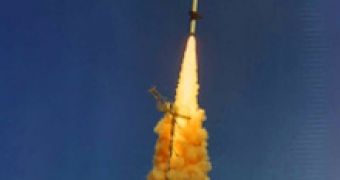Yesterday, Britain's 50-year-old space program comes to its closing stages with the beginning of its last Skylark rocket able to haulage weapons and launch satellites. The launch was originally scheduled for Sunday, but was delayed because of bad weather.
The last Skylark flew for about 16 minutes and reached a height of 158 miles. In this period, the microgravity period lasted six minutes, according to Johanna Bergstrom-Roos, a spokeswoman for the Swedish Space Corporation.
The last Skylark rocket was fired from Sweden, 47 years after the first mission from Skylark program blasted off from Woomera in Australia.
In all this years, Skylarks have been used to carry everything from crystals to frog eggs into space to see how they react in a gravity-free atmosphere.
Spokesman of the company which operates the rocket Hugh Whitfield, says Skylark was the originator of the space race for Britain.
"It was the first British rocket of any importance to go into space," he said. "It's a good feeling - it's always a relief after a launch. It had to come to an end sooner or later and today was the day it's gone in to the history books."
Skylark was developed by the Royal Aeronautical Establishment, Farnborough, in conjunction with the Rocket Propulsion Establishment, Westcott.
The rocket motors, which were filled with a plastic propellant, were produced by Royal Ordnance Bridgewater and Westcott. Initially funded by the UK government, Skylark has been operated on a commercial basis since 1966, first by British Aerospace, then Matra Marconi Space, and finally Sounding Rocket Services Ltd.
Although production of motors ended in November 1994, the stockpile allowed the launching of Skylarks at least once per year ever since.

 14 DAY TRIAL //
14 DAY TRIAL //